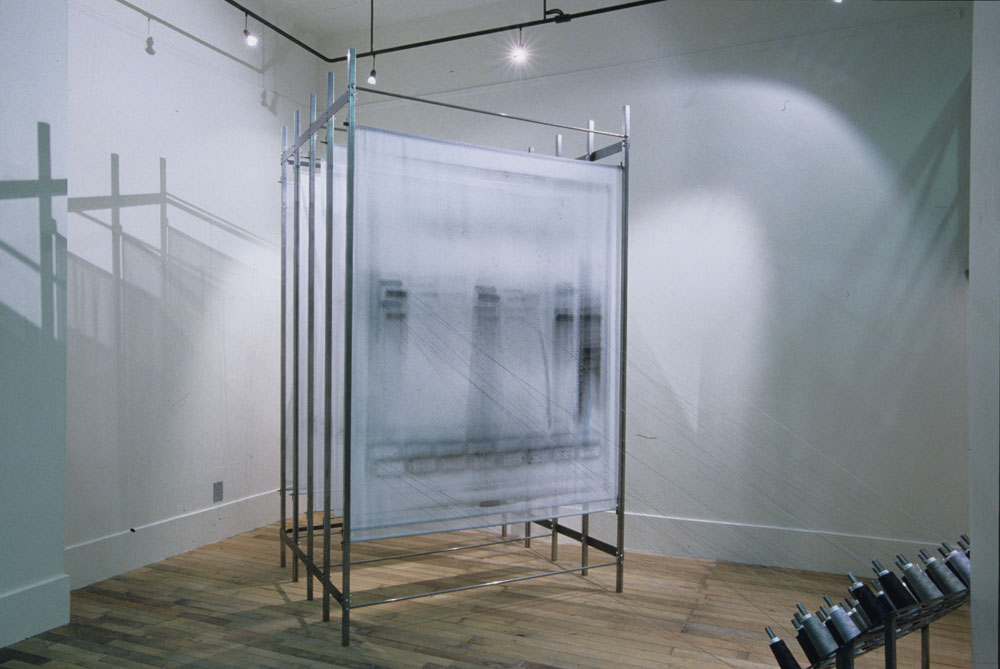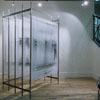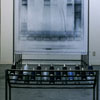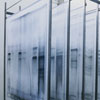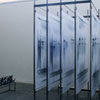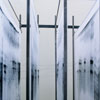DNA Fingerprints
Portland Building, Portland, Oregon 2005
The Mooney Exhibition Center, College of New Rochelle, New Rochelle, New York 2005
WORK IN EXHIBITION
FINGERPRINT DNA: A PORTRAIT OF AN ARAB-AMERICAN FAMILY, 2005
DNA from the Qamar family
Dye sublimation print on Ultra Sheer® fabric, dye, thread, steel frame
8’ x 4’ x 7’
ARTIST’S STATEMENT
In 2004 I worked with Ben Duncan Stoner, a genetics student, to make paternity genetic tests of my husband's Arab-American family. The images used for this work are from these tests. The gels were made by isolating DNA from the cheek cells of each member of the family. The isolated and dyed DNA is loaded into the small rectangular holes in the top of the gel shown. Electricity is run from one end of the gel to another, using a saltwater bath. The dyed pieces of DNA are then dragged through the gel by the electrical current, moving faster if they are small and slower if they are large. In this way, different length fragments of DNA are separated from one another. Everyone has two different lengths of fragments amplified.
In this test, each person passes one of these segments on to their offspring. The stains on the gel are indications of genetic qualities. When the marker is aligned; there are direct genetic relationships among family members. To produce the effect of the gel material, I scanned and enlarged the DNA test and then printed them using a dye sublimation process on Ultra Sheer®, a silk like material. I then layered the panels into a rug-loom-like structure. The panels were hand-dyed and sewed through each layer to emphasize and connect the dark marks made by the accumulation of DNA. The metal structures in which the panels hang represent a replica of an upright rug loom. The art of rug making has existed for centuries in the Arab world, and like the genetic material, the patterns are handed down through generations. A DNA test of an Arab-American Family is of particular interest at this time when those of the Arabic community in the country and worldwide are closely watched and are looked upon skeptically. The irony is this family portrait would look like any other family group, with subtle differences. In reproducing and layering these pieces, one can see that the identity markers of members of the family are aligned. This work is a literal representation of the characteristic carried within the genetic code for generations within one family.
